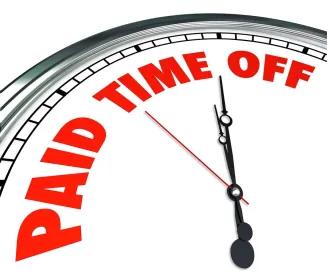Congress is moving quickly to provide relief to employees who are impacted by COVID-19, and the legislation will also have a big impact on most employers. The House of Representatives passed the Families First Coronavirus Response Act, H.R. 6201, in a bipartisan vote on Saturday, and the Senate will consider the bill this week. President Trump has expressed his approval of the emergency legislation and is expected to sign it if and when it clears Congress.
The Act has only passed the House and could still be changed by the Senate. Here are the key provisions of the current version of the legislation likely to impact employers:
Emergency Sick Leave
-
Private sector employers with fewer than 500 workers would have to provide employees with paid sick time off to (i) self-quarantine; (ii) obtain a medical diagnosis or treatment for coronavirus; or (iii) provide care for a family member who has been diagnosed with or is in quarantine for—or for a child whose school or daycare has closed due to—coronavirus.
-
Full-time employees would receive 80 hours of sick leave, and part-time workers would receive time off equivalent to their scheduled or normal work hours in a two-week period. Paid sick time would not carry over from year to year.
-
Workers taking leave for themselves would have to be paid at least their normal wage or the applicable federal, state, or local minimum wage, whichever is greater. Workers taking time off to care for family members would be paid at 2/3 of that rate.
-
Wages required to be paid under the emergency sick leave provisions would not be subject to the 6.2 percent Social Security payroll tax typically paid by employers on employees’ wages.
-
Employers with existing paid leave policies would be required to provide workers with sick leave under this program. An employer cannot require a worker to use any other available paid leave before using the sick time.
-
Employers would be prohibited from (i) requiring workers to find replacements to cover their hours during time off; or (ii) discharging or discriminating against workers for requesting paid sick leave or filing a complaint against the employer related to such.
-
Employers would have to post a notice containing information regarding the emergency sick leave provisions.
-
Workers under multi-employer collective bargaining agreements whose employers pay into pension plans would have access to paid emergency leave.
Emergency Family Leave
-
Private sector employers with fewer than 500 workers must provide up to 12 weeks of FMLA leave for employees who have been on the job for at least 30 days and who have to (i) comply with a quarantine requirement or recommendation because of exposure to or symptoms of coronavirus; (ii) provide care to family members who are complying with such a requirement or recommendation; or (iii) provide care for a child younger than 18 whose school or daycare has closed because of coronavirus.
-
The Department of Labor would be authorized to (i) exclude certain health care providers and emergency responders from paid leave benefits, and (ii) exempt small businesses with fewer than 50 employees from the paid leave requirements.
-
The first 14 days of leave could be unpaid (a worker could opt to use accrued vacation days or other available paid leave for those days). For subsequent days of leave, workers would receive a benefit from their employers equal to at least 2/3 of their normal pay rate.
-
Wages required to be paid under the emergency family leave provisions would not be subject to the 6.2 percent Social Security payroll tax typically paid by employers on employees’ wages.
-
FMLA would be further modified to allow persons to use unpaid leave if they are diagnosed with the virus, caring for a family member, or caring for a child whose school or daycare has closed because of a public health emergency, through December 31, 2020.
-
Workers under multi-employer collective bargaining agreements whose employers pay into pension plans would have access to paid emergency leave.
Employer Tax Credits
Employers will get some relief through refundable credits for the employer portion (but not the employee portion) of the Social Security payroll tax.
-
The sick leave credit for each employee would be for wages of up to $511 per day while the employee is receiving paid sick leave to care for himself or herself, or $200 if caring for a family member or child whose school has closed. The credit would be limited to 10 days per employee per quarter.
-
The family leave credit for each employee would be for wages of as much as $200 per employee per day, capped at $10,000 total.
-
To prevent a double benefit (from a simultaneous credit and deduction), employers, if they choose to take advantage of the credits, must include the amount of credits they receive in their gross income.
-
Employers would not receive the credit if they are also receiving the paid family and medical leave credit established by the 2017 Tax Reform Act.
-
The credit would be in effect for wages through December 31, 2020.
-
The Department of the Treasury would be authorized to issue regulations or guidance relating to the credits.
-
Amounts would be transferred to the social security and disability insurance trust funds from the general fund to cover the cost of the credits and lost wages.
Unemployment Insurance
-
Eligible laid-off workers could receive regular unemployment benefits for as long as 26 weeks.
If H.R. 6201 is passed, employers will need to act swiftly to amend policies and train employees to ensure that employee leaves are administered in accordance with the new law. We are monitoring this legislation and will provide an update as it progresses through the Senate.




 />i
/>i

